There’s something magical about watching Medjool dates develop — those rich, caramel-like fruits that hang like golden jewels under the desert sun. Known as the “King of Dates,” Medjool dates are prized not just for their sweetness but also for their soft, chewy texture and nutritional richness.
But behind every plump, glossy date is a slow, delicate process of growth — one that begins months before harvest, as small flowers emerge and transform into clusters of golden-brown fruit.
In this post, we’ll dive into the captivating journey of Medjool dates developing — from pollination to ripening — and explore how these desert treasures are cultivated, cared for, and brought to perfection. Whether you’re a gardening enthusiast, a date lover, or simply curious about how these natural sweets come to life, this guide offers a window into the fascinating world of Medjool date development.
Step 1: The Life Begins — Flowering and Pollination
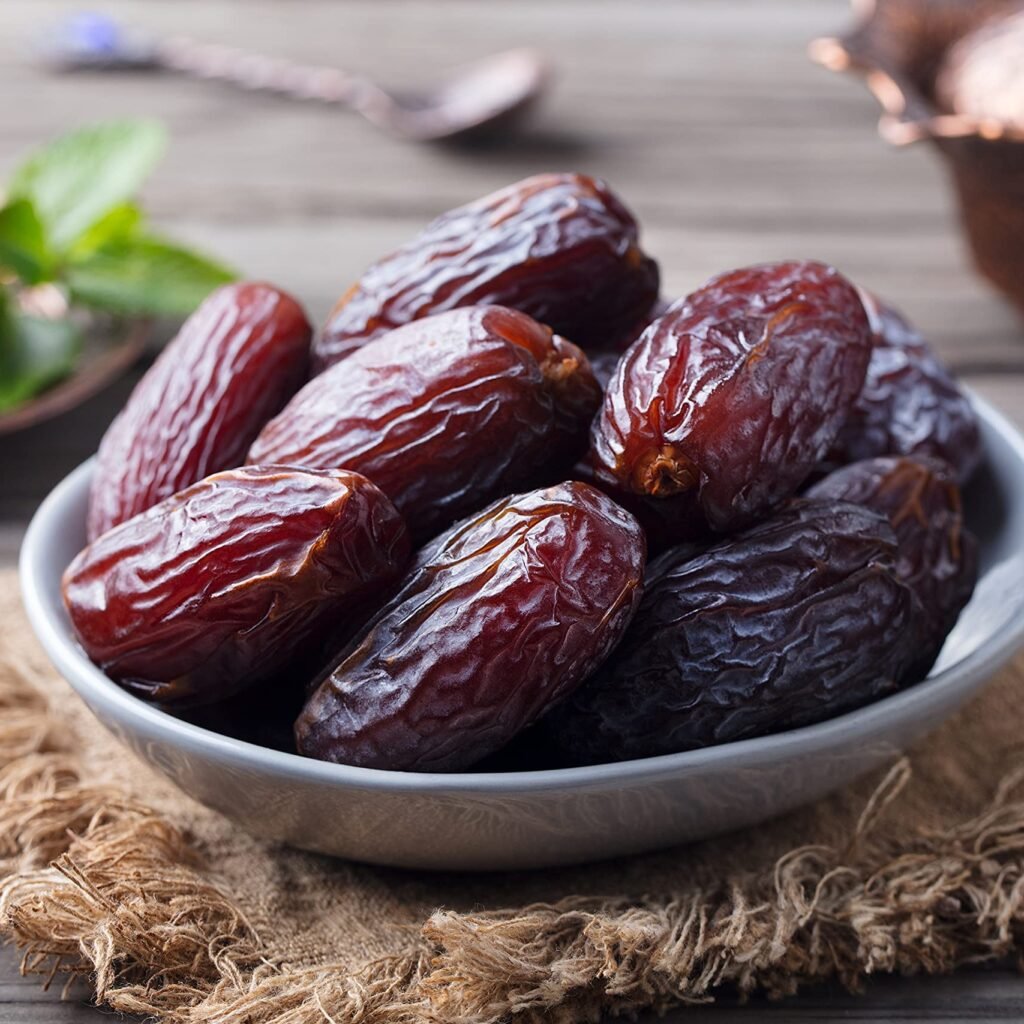
The story of Medjool dates begins in early spring, when the towering date palms burst into bloom. Each palm produces massive clusters of tiny, cream-colored flowers that release a subtle, sweet fragrance.
Date palms are dioecious, meaning there are separate male and female trees. The male trees produce pollen, while the female trees bear the fruit. Without proper pollination, the female flowers won’t develop into dates.
In commercial farms and home gardens alike, hand pollination is the key to success. Farmers climb ladders or use lifts to collect pollen from male flowers and gently dust it over the female blossoms. Some tie the pollen-filled flowers directly onto female clusters to ensure a good fruit set.
This ancient technique — used for thousands of years — ensures that each female tree receives the right amount of pollen for a heavy, healthy fruit crop.
Step 2: The Tiny Fruits Appear
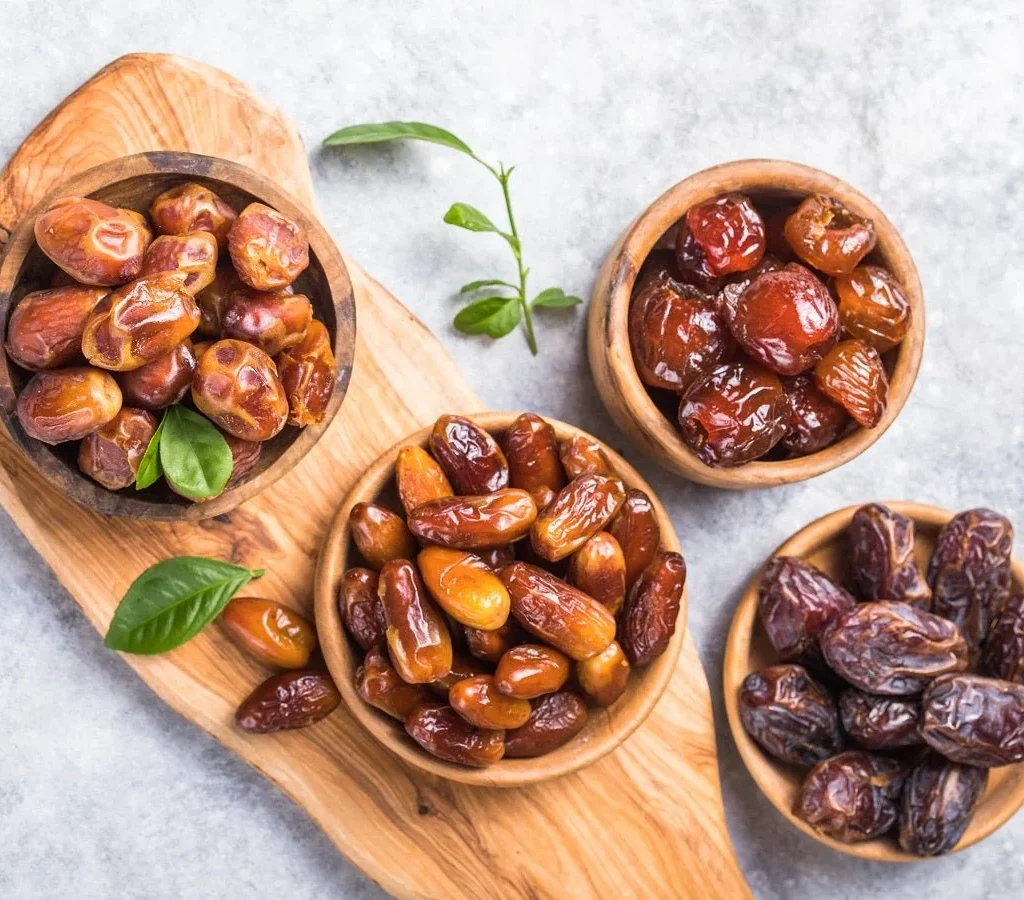
Once pollination takes place, something remarkable happens. Within a few weeks, the tiny, fertilized flowers begin to swell — the very first stage of Medjool date development.
At this stage, the fruits are small, hard, and green, resembling tiny olives. Each fruit is enclosed in a thin outer skin that will later stretch and darken as it matures. The date palm itself continues to channel nutrients from its massive root system to the growing fruit clusters.
Farmers often thin the clusters during this period. A single tree can produce hundreds of pounds of fruit, but too many dates in one bunch can reduce their size and quality. By trimming excess fruits early, growers allow the remaining dates to develop fully, becoming plump and flavorful later on.
Step 3: The Power of the Desert Sun
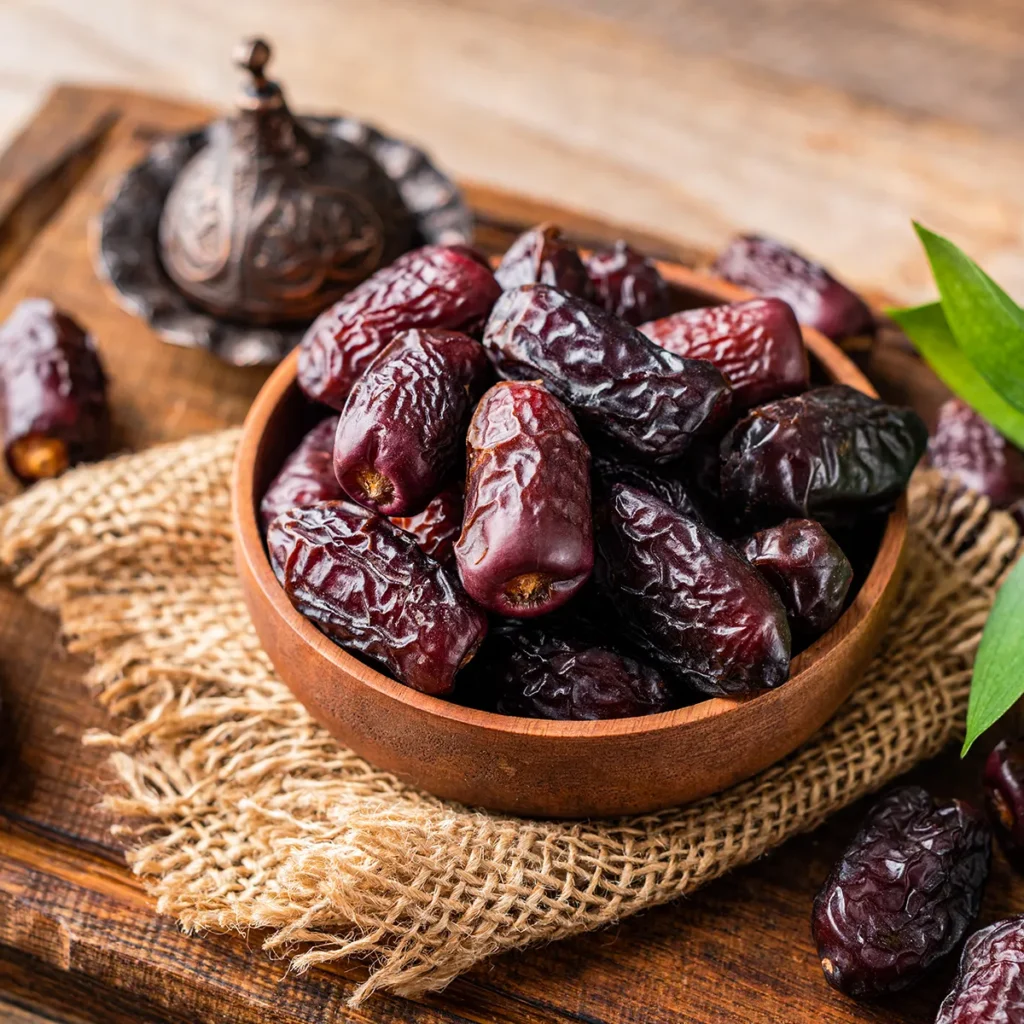
As spring transitions to summer, the Medjool date palm truly comes alive. The heat and sunlight of desert regions like California’s Coachella Valley, Arizona, or Morocco’s Draa Valley are ideal for their growth.
During this time, the fruit clusters expand rapidly. The green dates begin to elongate, their skin smooth and shiny. Inside, the flesh remains firm and starchy — far from the rich sweetness that defines mature Medjool dates.
But every day of sunlight counts. Medjool dates require constant warmth and dryness to develop their signature flavor. The intense sun drives photosynthesis, helping convert stored starches into natural sugars. The result is that deep, honey-like sweetness we associate with ripe dates.
Step 4: Protecting the Developing Dates
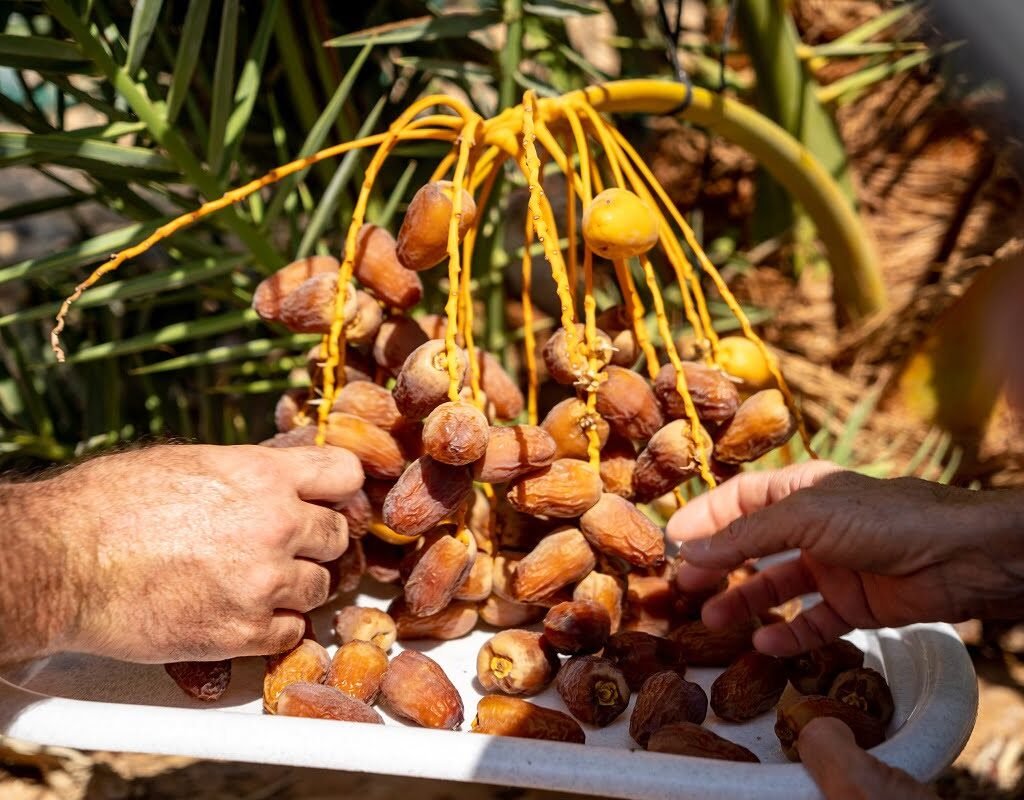
As the dates grow larger, they also become more vulnerable to the environment. Birds, insects, and even harsh winds can damage the developing fruits. To protect them, farmers use mesh bags or protective nets that cover each date cluster.
These bags serve multiple purposes:
- Protection from pests such as birds or wasps.
- Shielding from dust and debris, especially in windy desert regions.
- Improved airflow to prevent mold or rot.
The careful wrapping process may look tedious, but it’s essential to producing clean, high-quality dates. It’s part of what makes Medjool date farming so labor-intensive and why these fruits are often considered a luxury product.
Step 5: The Color Transformation — Stages of Ripening
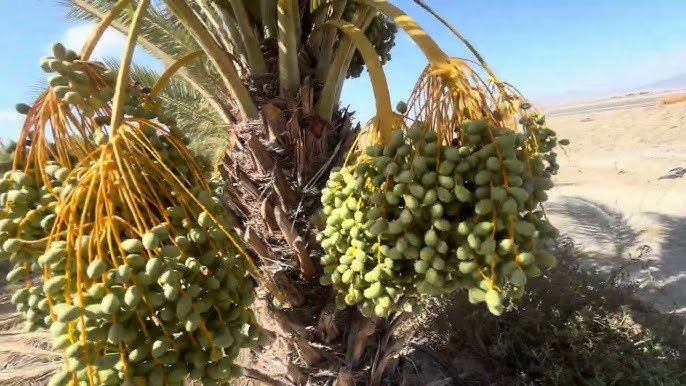
Medjool dates go through four key ripening stages, each marked by color, texture, and sweetness changes.
- Kimri Stage (Unripe):
The fruit is hard, green, and bitter. It’s filled with starch and has little sweetness. - Khalal Stage (Early Ripening):
The dates turn yellow or light orange. They begin to soften slightly and taste faintly sweet, but are still firm. - Rutab Stage (Semi-Ripe):
The color deepens to amber or reddish-brown. The texture becomes soft, and the sweetness intensifies. This stage is a favorite for those who like fresh, juicy dates. - Tamar Stage (Fully Ripe):
The date darkens to deep brown and becomes rich, soft, and intensely sweet — the signature Medjool flavor everyone loves.
During these transitions, the sugars in the fruit increase while moisture content decreases. The dates essentially self-dehydrate, turning into chewy, caramel-like delicacies ready for harvest.
Step 6: Harvesting the Sweet Rewards
By late summer to early fall, the Medjool dates are fully ripe. Harvesting is typically done by hand, using tall ladders or lifts to reach the clusters high up in the canopy.
Each bunch is carefully cut and lowered to prevent bruising. Because dates ripen unevenly, harvesting happens in several rounds over a few weeks. Farmers often inspect each cluster multiple times, removing only the ripest fruit during each pass.
Fresh Medjool dates — in their Rutab stage — are soft and perishable. Many are quickly refrigerated or frozen to preserve their texture and taste. Others are sun-dried naturally or using gentle heat to reach the Tamar stage, which makes them shelf-stable for months.
Step 7: The Art of Post-Harvest Care
Once harvested, the dates go through a meticulous cleaning and grading process. Each fruit is inspected for size, color, and softness. Premium Medjool dates are large, uniform, and glossy — these are the ones that make their way to gourmet stores and export markets.
After sorting, they are gently washed, air-dried, and sometimes steam-pasteurized to remove any surface impurities. Then they’re packaged for sale — still carrying the warmth and sweetness of the desert sun within them.
For consumers, these are more than just snacks; they’re natural energy boosters packed with fiber, potassium, magnesium, and antioxidants. Medjool dates are often called “nature’s candy,” but unlike processed sweets, they’re pure and full of life-giving nutrients.
Step 8: Growing Your Own Medjool Date Palm
Watching Medjool dates develop can inspire anyone to grow their own palm — even at home. Though it takes patience, it’s entirely possible to grow a Medjool palm from seed.
Here’s how:
- Obtain fresh Medjool seeds from unprocessed dates.
- Clean and soak them in warm water for 48 hours.
- Plant the seeds in a deep pot with sandy, well-draining soil.
- Keep warm and moist, ideally above 75°F (24°C).
- Be patient: Germination may take several weeks.
Though it may take several years before a palm produces fruit (and even longer to bear Medjool-quality dates), the process is rewarding. The palm’s graceful fronds and resilience make it a beautiful addition to any garden or landscape.
Step 9: Sustainability and the Future of Medjool Date Farming
Medjool date farming isn’t just about sweetness — it’s also a model of sustainable agriculture. Date palms thrive in arid environments where few other crops can survive, making them ideal for desert farming systems.
Farmers are increasingly adopting eco-friendly irrigation techniques, such as drip systems, to conserve water. The trees also help stabilize sandy soils and provide shade for other plants.
In places like California, Israel, and Morocco, Medjool dates have become a vital part of agricultural economies — supporting local families, preserving traditional practices, and promoting desert greening initiatives.
Step 10: The Final Stage — Enjoying the Fruits of Patience
From delicate blossoms to plump, caramel-colored fruits, the development of Medjool dates is a lesson in patience, care, and respect for nature’s timing. Each fruit tells a story — of sun, soil, wind, and human dedication.
When you bite into a soft, chewy Medjool date, you’re tasting months of transformation — a journey powered by sunlight and sustained by careful hands.
Whether you enjoy them fresh, stuffed with almonds, or blended into smoothies, Medjool dates remind us that true sweetness takes time.
Conclusion: A Celebration of Nature’s Sweetest Gift
Watching Medjool dates develop is more than just observing plant growth — it’s witnessing a natural miracle. From pollination to ripening, every stage reflects the perfect harmony between nature and nurture.
The next time you savor a Medjool date, remember the journey it took — from a desert flower to one of the world’s most luxurious fruits. It’s a process that blends tradition, patience, and sunlight into something truly extraordinary.
So whether you’re a farmer tending date palms or simply a lover of natural sweets, the story of developing Medjool dates is a reminder that nature’s best gifts are always worth the wait.
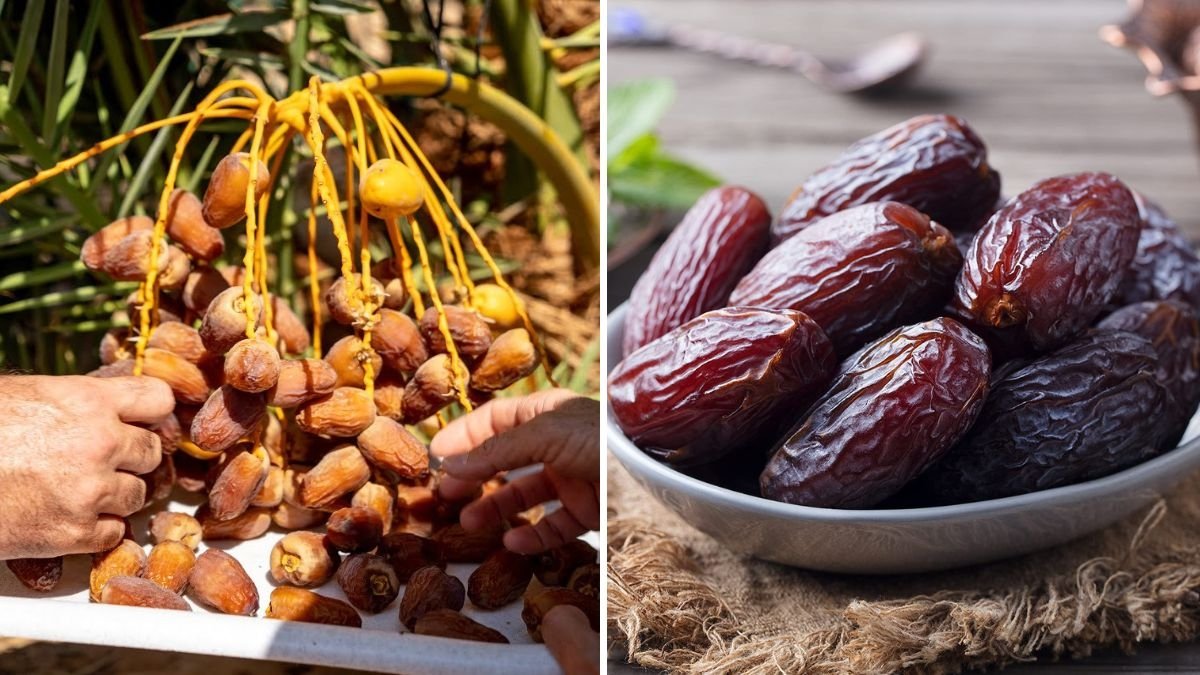


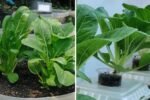
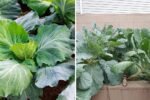
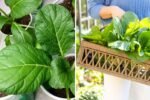
Leave A Comment